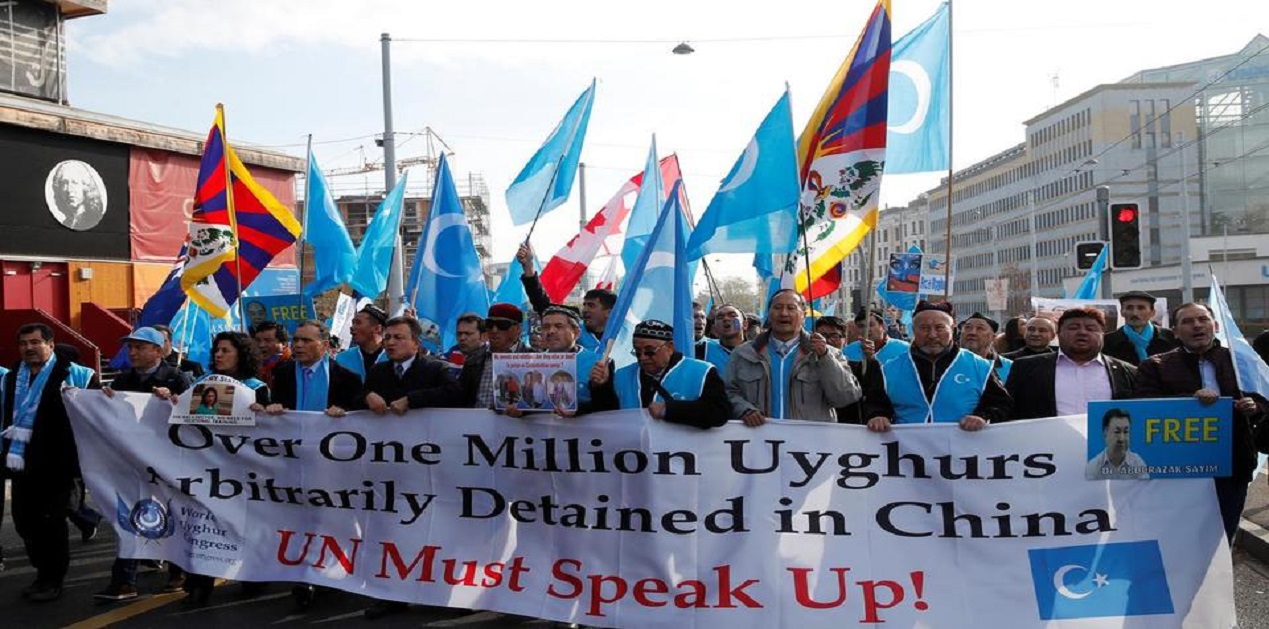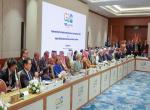The availability of cheap workforce has significantly contributed in transforming China into an industrial powerhouse in the present century. The labour force in China however, faces systematic abuses and they are denied protection of workers’ rights including freedom of association, freedom to protest etc. China while formally adopting labour laws over the years has continued its policy of exploitation. Incidents of forced labour, withholding of salaries, restrictions on movement, excessive overtime, abusive living and working conditions etc have been observed throughout the state.
Concurrently, the policy of forceful integration of the Uyghur Turkic community has facilitated a systematic process of obtaining forced labour from the re-education or detention camps that are absorbed in the foreign and Chinese firms in different sectors in Xinjiang and other parts of the country. Reportedly, around 80,000 people from the Xinjiang region have been transferred to work in 27 factories in nine provinces between 2017 and 2019 (ASPI 2020). The forced labour policy is a crucial component of the government efforts to dilute the cultural and religious identity of the community. In order to tilt the demographic balance, the state has orchestrated the migration of Han community to Xinjiang. It has led to new ethnic fault lines in the volatile region. The systematic targeting of members of Uyghur community through engineered use of forced labour and displacement constitutes a crime against humanity. The article seeks to address the various facets of forced labour among the Uyghur Turkic people and highlight the role of global and domestic companies in perpetuating the exploitation in China.
Forceful Integration
The Uyghur Turkic community residing in the Xinjiang Uyghur Autonomous Region (XUAR) occupies a precarious political and social position in the Han dominated Chinese state. The distinctive religious, ethnic and physical features of the community are used as identifier to subjugate and forcefully co-opt the group in the Chinese political landscape through political indoctrination in the infamous “re-education” camps.
The Chinese government has adopted range of repressive policies in the form of mass arbitrary detentions, torture and mistreatment of the Uyghur community. The fundamental rights to freedom of expression, religion, privacy and protections from torture and unfair trials are denied to the members of the community. The state in order to counter the supposed problem of religious extremism, has actively sought to erase the Islamic and Turkic cultural identity in Xinjiang with critics calling it a systematic case of cultural genocide through social re-engineering process of political indoctrination, mandarin language and vocational training (Human Rights Watch 2018).
The Chinese government’s bulldozing of political rights infringes the Article 1 of the International Covenant on Civil and Political Rights (ICCPR) that assures the right to self-determination and freely determines political status and pursues economic, social and cultural development. The suppression of religious rights violates the Article 18 of the Universal Declaration of Human Rights that guarantees freedom of religion or belief; Declaration on the Elimination of All Forms of Intolerance and of Discrimination Based on Religion or Belief and the Article 18 of ICCPR that ensures the right to freedom of thought, conscience and religion (OHCHR 2020; OHCHR 2020).
These measures by the government were supplemented by the policy of economic integration that witnessed large-scale movement of Chinese businesses and workers to settle in the urban centres of XUAR. It was also aimed at tilting the demographic balance in the province to further marginalise the community and incidents of ethnic violence have been reported in several urban centres throughout the region. In 1949, the Uyghur community contributed 75 percent and Han community contributed 7 percent of the population. In 2018, the population share of Uyghurs has been reduced to 48 percent and that of Hans has increased to 36 percent out of the total population of 23.6 million in the autonomous region (Liu & Peters 2017; Human Rights Watch 2018).
The government as part of the said integration process in the early 2000s pushed for investment from the economically rich eastern region and advance developmental activities in the western frontier. The policy involved movement of labour to promote “inter-ethnic fusion” (Mai 2015). Consequently, a large number of Uyghur men and women were coerced to join the labour force. The process of transferring comparatively on a smaller scale to other provinces began during this period.
This policy was aimed at reducing the cultural and geographical attachment of the Uyghur community with the native region as also to ‘sinicise’ the community to operate in the national political economy. The workers were subjected to exploitation in terms of poor living and working conditions, overtime and discriminatory attitudes from the Han Chinese co-workers. Eventually, the killing of two Uyghur workers on 25 June by Han co-workers in Early Light Toy Factory in Guangdong Province sparked ethnic riots in Urumqi on 5 July that killed 197 and injured 1721 people (The Indian Express 2009; Watts 2009; Chang 2013; ASPI 2020). The government carried out large scale arrests and several others had disappeared. The demand for Uyghur labour in the following months by Chinese factories subsided to minimise the risk of ethnic violence and loss of productivity.
The government in order to encourage economic integration of the frontier region offered financial and tax subsidies to businesses for establishing factories and employing Uyghur workforce. In 1996, campaign terming, “Supporting Xinjiang” was set up that designated 19 coastal provinces and cities to support cities in Xinjiang (Mai 2015; Xinhua 2019). It also introduced Xinjiang Aid programme in 2010 to facilitate the richer provinces and cities to pair up with cities and prefectures in the western region to help in the development and stability. The aid initiative was subdivided into Educational Xinjiang Aid; Medical Xinjiang Aid; Technological Xinjiang Aid and Industrial Xinjiang Aid (Allen-Ebrahimian 2020; ASPI 2020).
The Industrial Xinjiang Aid was activated to accommodate the ‘radicalised’ and ideologically inclined individuals to rehabilitate through re-education in the broader workforce. As part of the programme, local governments and firms were pushed to employ Uyghur workers. The programme has been projected as an effective poverty alleviation scheme (Liu & Peters 2017; Allen-Ebrahimian 2020). However, in reality, the hired work force continues to undergo indoctrination to detach themselves from their Islamic and Turkic social identity and adopt mainstream Chinese national identity.
Transition from Re-education to Forced Labour
The Chinese Ministry of Public Security has described re-education through labour formally introduced in Xinjiang in 2017 as an innovative administrative reform that utilises compulsory education to mould offenders to become law abiding, hard working and patriotic citizens. It broadly incorporates detention and punitive action against individuals involved in minor offences (HRW 1998; Congressional Executive Commission on China 2020). The security forces have detained large number of individuals on trivial charges including possession of religious contents on social media.
Human Rights Watch has identified five major lacunae in the re-education through labour. Firstly, the absence of procedural restraints; secondly, the indoctrination as a form of punishment for political and religious dissidents; thirdly, the absence of appeal mechanism; fourthly, the harsh conditions in the camps and fifthly, the system of "retention for in-camp employment" that allows the authorities to retain detainees after expiry of their term sentences (Human Rights Watch 1998). The detention process is highly arbitrary and tantamount to violation of Article 9 (4) of the International Covenant on Civil and Political Rights (ICCPR) that states "Anyone who is deprived of his liberty by arrest or detention shall be entitled to take proceedings before a court, in order that the court may decide without delay on the lawfulness of his detention" (OHCHR 2020). It therefore, eliminates the presumption of innocence and denies access to fair trial and plea against the charges. China has also contravened Article 8 (3) of the ICCPR that prohibits forced or compulsory labour (OHCHR 2020).
The scale of arbitrary detentions increased manifold after the government launched the “Strike Hard Campaign Against Violent Terrorism” in May 2014. The campaign was projected as an effort to preserve state security, ethnic unity and social stability (European Parliament 2018). The security forces following the initiative were encouraged to maintain a high number of detentions leading to severe abuse of coercive power to suppress peaceful political/ religious expression and activism (Human Rights Watch 2018).
The White Paper issued in 2015 noted that incorporation of grass roots level anti terrorism efforts is crucial for the development initiative and stability in Xinjiang (Mai 2015). In order to compliment the Strike Hard initiative, the government sent around 200,000 cadres and government officials to visit villages and monitor the community in XUAR in 2014. The Uyghur citizens were divided into trustworthy, average and untrustworthy category to rank their political loyalty. Advanced surveillance tools such as face recognition, biometrics including DNA samples, fingerprints, iris scans and blood types of all residents between the age of 12 and 65 were incorporated to extract information and detain on the basis of mere suspicion leading to mushrooming of camps throughout the region in the current decade. It is estimated that around 1.8 million Uyghurs living in detention camps are forced to undergo patriotic education and commit forced labour (Human Rights Watch 2018).
The re-education programme in XUAR has re-invigorated the state sponsored labour transfer scheme that facilitated the forced displacement of a large chunk of detained trainees who have supposedly graduated in the camps to work in other parts of the country. The detainees are unable to refuse the work assigned by the government. This workforce referred as surplus labour or poverty stricken labour were absorbed in the supply chain of at least 82 foreign and Chinese firms in automobile, textile, technology sectors in 2019. The Industrial Xinjiang Aid has been utilised to set up satellite factories in Xinjiang and employing local workforce primarily from the detention camps. There are around 4400 factories operating in the province that have reportedly employed around million local workers. The aid programme also includes labour transfer scheme that involves hiring Uyghur workers to work in other provinces (Allen-Ebrahimian 2020; ASPI 2020). Amy K. Lehr and M. Bechrakis have noted three kinds of forced labour in China i.e. through coercion among the rural poor; prisoners and current and ex-detainees coming from the re-education camps (Lehr and Bechrakis 2019).
The labour coming from the re-education camps has emerged as major economic driver in Xinjiang province and in fact proper channels have been developed to deliver detainees to companies within the province and elsewhere. The programme has regularised the process of buying and selling of labour. In 2018, the Xinjiang Provincial government announced financial incentive to brokers ranging from US$ 3 each worker for employment within Xinjiang to US$ 43.25 for employment in other provinces. Xinjiang government offered around US$ 144 per worker to the employers for one year contract and US$ 720 per worker for three years contract. The government and brokers of different companies have resorted to advertisements that dehumanises the community with captions such as “government led qualified, secure and reliable Uyghur workers for transfer to some 10 provinces in China”; “the advantages of Xinjiang workers are: semi-military style management, can withstand hardship, no loss of personnel. Minimum order is for 100 workers!” (ASPI 2020). These actions strongly indicate Chinese government’s complicity in continuing forced labour despite formally denouncing the inhumane practise in international forums.
The International Labor Organisation (ILO) has identified 11 indicators to define forced labour, i.e. abuse of vulnerability, deception, restriction of movement, isolation, physical and sexual violence, intimidation and threats, retention of identity documents, withholding of wages, debt bondage, abusive working and living conditions, excessive overtime (ILO 2020). The Uyghur workers experiencing abuse of vulnerability, restriction of movement, intimidation and threats, isolation, abusive working and living conditions, excessive overtime etc fit the definition of forced labour identified by the ILO.
The workers face restriction of movement within the camps through monitoring and do not enjoy the similar luxury enjoyed by the Han workers returning home during holidays as well as in terms of salary. Center for Strategic and International Studies in October 2019 has reported several instances of non-payment of salaries or meagre salary at below the minimum wage (Lehr and Bechrakis 2019). China has breached ILO instruments including the Protection of Wages Convention, 1949 and Minimum Wage Fixing Convention, 1970 (ILO 2020; ILO 2020; Allen-Ebrahimian 2020).
The workers are also threatened to comply with working terms and conditions to avoid detention of their family members in Xinjiang. Their vulnerability is abused to enforce regulation on the workers. The workers are accommodated in segregated dormitories and the interaction with the city of employment is minimal. The workers are isolated from their families during the course of the contract and transported in designated trains. The workers are also threatened with detention and re-education camps in case of any violations. The labour dormitories are regularly searched by security officers to look for religious items (Allen-Ebrahimian 2020; Bengtsen 2018). The work shifts usually go beyond 8 hours and they are forced to partake in mandarin language and ideological training in the after office hours.
The workers live under the condition of constant surveillance. Xinjiang’s Human Resources and Social Affairs Department maintains a central database to record the medical, ideological and employment details of each worker. The government also extracts information from the social media accounts of the workers to monitor their movement and internet activities. The companies comply with the government’s efforts to sinicise the Uyghur workers and advertise the success of its ‘civilising mission’ over the Uyghur workers (Allen-Ebrahimian 2020; Bengtsen 2018).
The number of transfers from the region to other provinces has increased in the successive years. It is estimated that 20,859 people were transferred in 2017, 28,000 in 2018 and 32,000 in 2019. Xinjiang authorities through attractive incentives have exceeded their labour transfer targets by 4 percent in 2017 and 25 percent in 2019 (ASPI 2020).
International Responses
The Coalition to End Forced Labour in the Uyghur Region in 2020 has appealed to the apparel and textile sector firms to address the subject of abuses of the Turkic group in Xinjiang and other parts of the country. The Coalition has reported that an unspecified number of Uyghur workers were transported to different factories throughout China during the country wide lockdown as a result of COVID-19 crisis in early 2020 risking their health. It has pointed to the complicity of the textile companies in perpetuating forced labour. The Coalition has suggested that companies that rely on supply chain from China must assure that their product does not involve forced labour in Xinjiang. There is however, no mechanism for companies to verify that the workstations are free of forced labour in Xinjiang. Therefore, the firms have been urged to cease their operations from Xinjiang. But the practise of Uyghur forced labour has penetrated in the other provinces also. It would be difficult for firms to enforce labour regulations due to their dependence on the supply chains in China. The companies also benefit from the exploitative production structure that helps it to keep their expenses low (Nguyen 2020; End Uyghur, Forced Uyghur 2020; Balch 2020).
The Australian Strategic Policy Institute (ASPI) has identified at least 82 Chinese and foreign firms including several renowned brands that employ forced labour. These companies are Abercrombie & Fitch, Acer, Adidas, Alstom, Amazon, Apple, ASUS, BAIC Motor, BMW, Bombardier, Bosch, BYD, Calvin Klein, Candy, Carter’s, Cerruti 1881, Changan Automobile, Cisco, CRRC, Dell, Electrolux, Fila, Founder Group, GAC Group (automobiles), Gap, Geely Auto, General Motors, Google, Goertek, H&M, Haier, Hart Schaffner Marx, Hisense, Hitachi, HP, HTC, Huawei, iFlyTek, Jack & Jones, Jaguar, Japan Display Inc., L.L.Bean, Lacoste, Land Rover, Lenovo, LG, Li-Ning, Mayor, Meizu, Mercedes-Benz, MG, Microsoft, Mitsubishi, Mitsumi, Nike, Nintendo, Nokia, Oculus, Oppo, Panasonic, Polo Ralph Lauren, Puma, Roewe, SAIC Motor, Samsung, SGMW, Sharp, Siemens, Skechers, Sony, TDK, Tommy Hilfiger, Toshiba, Tsinghua Tongfang, Uniqlo, Victoria’s Secret, Vivo, Volkswagen, Xiaomi, Zara, Zegna, ZTE (ASPI 2020).
The US in December 2017 applied sanctions under Global Magnitsky Human Rights Accountability Act against Gao Yan, the head of Chaoyang District Public Security Bureau (PSB) Branch for torture and death of political activist, Cao Shunli on 14 March 2014 (NCHRD 2017). The US for the second time applied sanctions on Xinjiang Party Secretary, Chen Quanguo on 9 July 2020 on the charges of carrying out arbitrary detentions, torture and surveillance (Hansler & Atwood, 2020).
Human Rights Watch noted that the repressive measures were intensified after Communist Party Secretary Chen Quanguo took over as Xinjiang Party Secretary in 2016. He was notorious for applying harsh tools in Tibet prior to Xinjiang when he served as the Party Secretary between 2011 and 2016.
Besides the US, the UK on 6 July 2020 introduced the Global Human Rights Sanctions Regulations to thwart rights violations and uphold accountability for activities within any state’s territory. Therefore, sanctions would come into effect if any government curtailed the “right to life; right not to be subjected to torture or cruel, inhuman or degrading treatment or punishment and right to be free from slavery, not to be held in servitude or required to perform forced or compulsory labour” (UK Government 2020). However, the sanctions have not yet been applied to any member of the Chinese government currently.
The European Parliament had adopted resolution on the situation of Uyghurs in China on 19 December 2019 noting the hostility of Chinese government towards peaceful dissent, freedom of expression and religion and the rule of law especially after Xi Jinping’s coming to power in March 2013 (European Parliament 2019). The resolution condemns the political re-education camps and the exploitation of labour during their detainment.
On 15 September 2020, the U.S. blocked shipping of products from Yili Zhuowan Garment Manufacturing Co., Ltd.; Baoding LYSZD Trade and Business Co., Ltd., Junggar Cotton and Linen Co. and Hefei Bitland Information Technology Co. that supply clothing and other cotton goods, computer parts, hair products over charges of forced labour. It is estimated that 20 percent of the cotton supplied to the US comes from XUAR (Fox 2020; McEvoy 2020). However, as the commentary shows that several western companies continue to tie up with satellite firms that use forced labour. Therefore, the scope of the sanctions has been limited in scope.
Push for Course Correction
The subject of Uyghur forced labour besides repression in Xinjiang draws broad attention to the condition of labour laws in the country as well as complicity of high profile international brands. There is an urgent need for international forums associated with human rights such as UN Human Rights Council (UNHRC), labour rights such as International Labour Organisation (ILO) and global financial institutions to collaborate in their efforts to pressurise China to stop the inhumane policy (Ward 2020). ASPI has suggested that firms should push for conducting independent social audits and inspections on its factory labour; utilise their leverage to pressurise the authorities to take suitable measures. Civil society groups such as NGOs, labour unions and consumer advocacy groups could also contribute by raising public awareness, demand brands to uphold transparency, conduct due diligence and social audits and issue public commitments. It has also urged other states to review trade agreements to restrict commodities that uses forced labour and insist the Chinese government to ratify the Convention on Forced Labour, 1930 (No. 29), Abolition of Forced Labour Convention, 1957 (No.105) and the Protocol of 2014 to the Forced Labour Convention. Moreover, international coalition focusing of Uyghur and the labour issues and reduction in technology assistance that emboldens the surveillance infrastructure could be undertaken to force the Chinese government towards course correction (Ward 2020; ASPI 2020).
Moreover, the 2022 Beijing Winter Olympics could be used as a pressure point as public campaign against China’s misdeeds could affect corporate sponsorships of the events and temper its legitimacy. There is also a need for greater coordination among foreign intelligence agencies and especially so for publishing credible documents to implicate the Chinese government for its continued practise of forced labour in general and Uyghurs in particular (Ward 2020).
Conclusion
The Uyghur and other minority ethnic groups in the XUAR are facing myriad set of challenges. In this context, the subject of forced labour has assumed a low priority. The research displays the interplay between the government and the private firms in perpetuating the exploitation of the Uyghur workers in China. It would require innovative solutions through coordinated efforts among human rights groups, labour rights, civil and political rights groups and financial institutions. Currently, the international response has been insufficient to pressurise the Chinese government to comply with the agreed international human rights and labour norms.
From the Indian perspective, it should expand its participation in the multi-lateral forums and enhance its deliberative strength to pressurise China on labour laws violations as well as the oppression of the Uyghur community. India’s efforts must be complimented with comprehensive measures that guarantee the well-being and upliftment of labour force in compliance with the universal standards within the country. It can strengthen India’s credibility to expose China’s violation of human rights and its continued practise of forced labour in the international arena.
References
- A. K. Lehr & M. Bechrakis, “Connecting the Dots in Xinjiang: Forced Labor, Forced Assimilation, and Western Supply Chains,” Center for Strategic & International Studies, October 2019, at https://csis-website-prod.s3.amazonaws.com/s3fs-public/publication/Lehr_ConnectingDotsXinjiang_interior_v3_FULL_WEB.pdf (Accessed September 24, 2020).
- A. H. Liu & K. Peters, “The Hanification of Xinjiang, China: The Economic Effects of the Great Leap West,” Studies in Ethnicity and Nationalism, 17 (2), 2017, at https://onlinelibrary.wiley.com/doi/pdf/10.1111/sena.12233 (Accessed September 25, 2020).
- A. Ward, “5 real steps the US could take to help Uighurs in China,” Vox, July 28, 2020, at https://www.vox.com/2020/7/28/21337081/china-uighurs-muslims-trump-forced-labor-help (Accessed September 27, 2020).
- Australian Strategic Policy Institute, “Uyghurs for sale: ‘Re-education’, forced labour and surveillance beyond Xinjiang”, Australian Strategic Policy Institute, March 2020, at https://www.aspi.org.au/report/uyghurs-sale (Accessed September 22, 2020).
- B. Allen-Ebrahimian, “Exclusive: Caterpillar sourced clothes from Xinjiang factory involved in coercive labor,” Axios, June 30, 2020, at https://www.axios.com/caterpillar-xinjiang-uighur-labor-a6ec73df-b75e-4aea-ae76-cc8182ad6a3c.html (Accessed September 25, 2020).
- B. Fox, “US halts imports from China’s Uighur region for forced labor,” AP News, September 15, 2020, at https://apnews.com/article/forced-labor-global-trade-china-archive-race-and-ethnicity-0a2b64d4b2dfee8dc6be8d402a96ecbe (Accessed September 20, 2020).
- Congressional Executive Commission on China, “Prospects for Reforming China's Reeducation Through Labor System,” Congressional Executive Commission on China, 2020, at https://www.cecc.gov/publications/issue-papers/prospects-for-reforming-chinas-reeducation-through-labor-system (Accessed September 23, 2020).
- End Uyghur, Forced Uyghur, “Call to Action,” End Uyghur, Forced Uyghur, October 2020, at https://enduyghurforcedlabour.org/call-to-action/ (Accessed September 24, 2020).
- European Parliament, “European Parliament resolution of 19 December 2019 on the situation of the Uyghurs in China,” European Parliament, December 2019, at https://www.europarl.europa.eu/doceo/document/TA-9-2019-0110_EN.html (Accessed September 25, 2020).
- European Parliament, “European Parliament resolution on mass arbitrary detention of Uyghurs and Kazakhs in the Xinjiang Uyghur Autonomous Region,” European Parliament, 2018, at https://www.europarl.europa.eu/doceo/document/B-8-2018-0461_EN.html (Accessed September 27, 2020).
- F. K. Chang, “Playing the Long Game: Unrest and Changing Demography in Xinjiang,” Foreign Policy Research Institute, July 1, 2013, at https://www.fpri.org/2013/07/playing-the-long-game-unrest-and-changing-demography-in-xinjiang/ (Accessed September 26, 2020).
- Human Rights Watch, “Reeducation Through Labor in China,” Human Rights Watch, June 1998, at https://www.hrw.org/legacy/campaigns/china-98/laojiao.htm (Accessed September 21, 2020).
- Human Rights Watch, “Eradicating Ideological Viruses: China’s Campaign of Repression Against Xinjiang’s Muslims,” Human Rights Watch, September 9, 2018, at https://www.hrw.org/report/2018/09/09/eradicating-ideological-viruses/chinas-campaign-repression-against-xinjiangs (Accessed September 22, 2020).
- International Labour Organization, “Minimum Wage Fixing Convention, 1970 (No. 131),” International Labour Organization, 2020, at https://www.ilo.org/dyn/normlex/en/f?p=NORMLEXPUB:12100:::NO:12100:P12100_ILO_CODE:C131:NO (Accessed September 23, 2020).
- International Labour Organization, “Protection of Wages Convention, 1949 (No. 95),” International Labour Organization, 2020, at https://www.ilo.org/dyn/normlex/en/f?p=NORMLEXPUB:12100:0::NO::P12100_ILO_CODE:C095 (Accessed September 23, 2020).
- International Labour Organization, “ILO Indicators of Forced Labour,” International Labour Organization, 2020, at https://www.ilo.org/wcmsp5/groups/public/---ed_norm/---declaration/documents/publication/wcms_203832.pdf (Accessed September 27, 2020).
- J. Hansler & K. Atwood, “US targets Chinese officials for Xinjiang human rights abuses,” CNN, July 13, 2020, at https://edition.cnn.com/2020/07/09/politics/xinjiang-chinese-officials-sanctions/index.html (Accessed September 22, 2020).
- J. Mai, “Expand aid programme for China's Xinjiang region to include anti-terrorism, says leading cadre,” South China Morning Post, September 24, 2015, at https://www.scmp.com/news/china/policies-politics/article/1861199/expand-aid-programme-chinas-xinjiang-region-include (Accessed September 25, 2020).
- J. McEvoy, “U.S. Blocks Imports From China’s Uighur Region Over Forced Labor Concerns,” Forbes, September 14, 2020, at https://www.forbes.com/sites/jemimamcevoy/2020/09/14/us-blocks-imports-from-chinas-uighur-region-over-forced-labor-concerns/?sh=44d7ac647123 (Accessed September 24, 2020).
- J. Watts, “Old suspicions magnified mistrust into ethnic riots in Urumqi,” The Guardian, July 10, 2009, at https://www.theguardian.com/world/2009/jul/10/china-riots-uighurs-han-urumqi (Accessed September 25, 2020).
- NCHRD, “Small Step Toward Accountability: US Sanctions Chinese Official Over Death of Cao Shunli,” NCHRD, December 22, 2017, at https://www.nchrd.org/2017/12/small-step-toward-accountability-us-sanctions-a-chinese-official-over-death-of-cao-shunli/ (Accessed September 27, 2020).
- O. Balch, “Ban US cotton imports from Xinjiang, say human rights campaigners,” The Guardian, August 31, 2020, at https://www.theguardian.com/global-development/2020/aug/31/ban-us-cotton-imports-from-xinjiang-say-human-rights-campaigners (Accessed September 25, 2020).
- OHCHR, “International standards on freedom of religion or belief,” OHCHR, 2020, at https://www.ohchr.org/en/issues/freedomreligion/pages/standards.aspx (Accessed September 27, 2020).
- OHCHR, “International Covenant on Civil and Political Rights,” OHCHR, 2020, at https://www.ohchr.org/en/professionalinterest/pages/ccpr.aspx (Accessed September 24, 2020).
- P. Bengtsen, “China’s Forced Labor Problem,” The Diplomat, March 21, 2018, at https://thediplomat.com/2018/03/chinas-forced-labor-problem/ (Accessed September 25, 2020).
- T. Nguyen, “Your face mask — and your T-shirt — might have been made with Uighur forced labor,” Vox, August 17, 2020, at https://www.vox.com/the-goods/2020/8/17/21372466/uighur-forced-labor-supply-chain-masks-shirt (Accessed September 24, 2020).
- The Indian Express, “China says police killed 12 in Urumqi rioting,” The Indian Express, July 19, 2009, at https://indianexpress.com/article/news-archive/print/china-says-police-killed-12-in-urumqi-rioting/ (Accessed September 25, 2020).
- UK Government, “UK global human rights sanctions,” UK Government, July 6, 2020, at https://www.gov.uk/government/collections/uk-global-human-rights-sanctions?utm_source=6a4b1ca4-e11f-45a1-aaed-1628905a6b4d&utm_medium=email&utm_campaign=govuk-notifications&utm_content=immediate (Accessed September 26, 2020).
- Xinhua, “China highlights support to Xinjiang through pairing assistance,” Xinhua, July 16, 2019, at http://www.xinhuanet.com/english/2019-07/16/c_138231911_3.htm (Accessed September 27, 2020).
(The paper is the author’s individual scholastic articulation. The author certifies that the article/paper is original in content, unpublished and it has not been submitted for publication/web upload elsewhere, and that the facts and figures quoted are duly referenced, as needed, and are believed to be correct). (The paper does not necessarily represent the organisational stance... More >>
Image Source: https://cdni0.trtworld.com/w960/h540/q75/49650_download1_1549738485880.jpeg










Post new comment